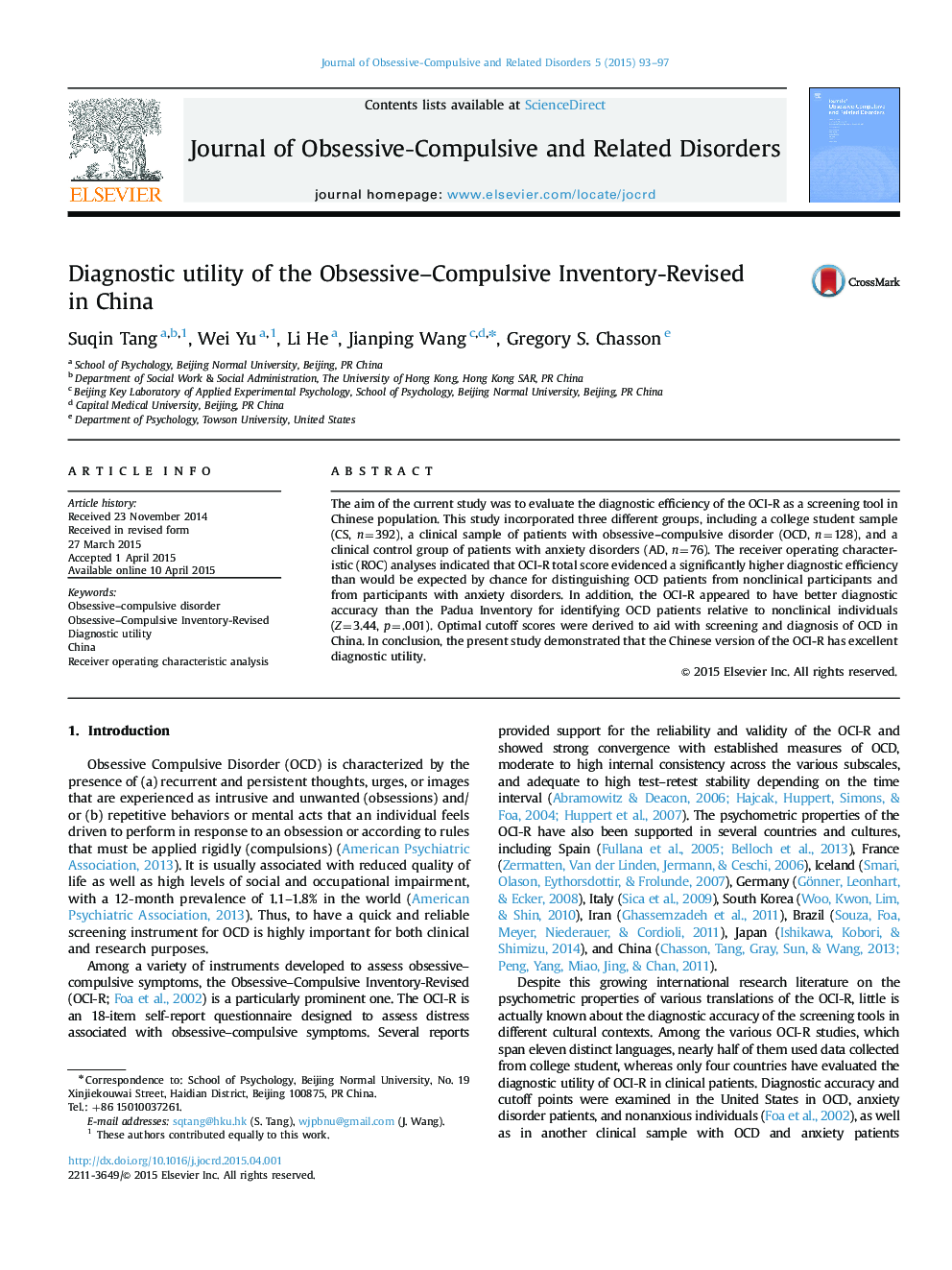| Article ID | Journal | Published Year | Pages | File Type |
|---|---|---|---|---|
| 912291 | Journal of Obsessive-Compulsive and Related Disorders | 2015 | 5 Pages |
•The diagnostic accuracy of the Chinese OCI-R was evaluated.•Three groups were included, namely college students, OCD, anxiety disorder patients.•The OCI-R can efficiently distinguish OCD patients from the other two groups.•The OCI-R had better diagnostic accuracy than the Padua Inventory in identifying OCD.•Cutoff points were derived to aid with screening and diagnosis of OCD in China.
The aim of the current study was to evaluate the diagnostic efficiency of the OCI-R as a screening tool in Chinese population. This study incorporated three different groups, including a college student sample (CS, n=392), a clinical sample of patients with obsessive–compulsive disorder (OCD, n=128), and a clinical control group of patients with anxiety disorders (AD, n=76). The receiver operating characteristic (ROC) analyses indicated that OCI-R total score evidenced a significantly higher diagnostic efficiency than would be expected by chance for distinguishing OCD patients from nonclinical participants and from participants with anxiety disorders. In addition, the OCI-R appeared to have better diagnostic accuracy than the Padua Inventory for identifying OCD patients relative to nonclinical individuals (Z=3.44, p=.001). Optimal cutoff scores were derived to aid with screening and diagnosis of OCD in China. In conclusion, the present study demonstrated that the Chinese version of the OCI-R has excellent diagnostic utility.
